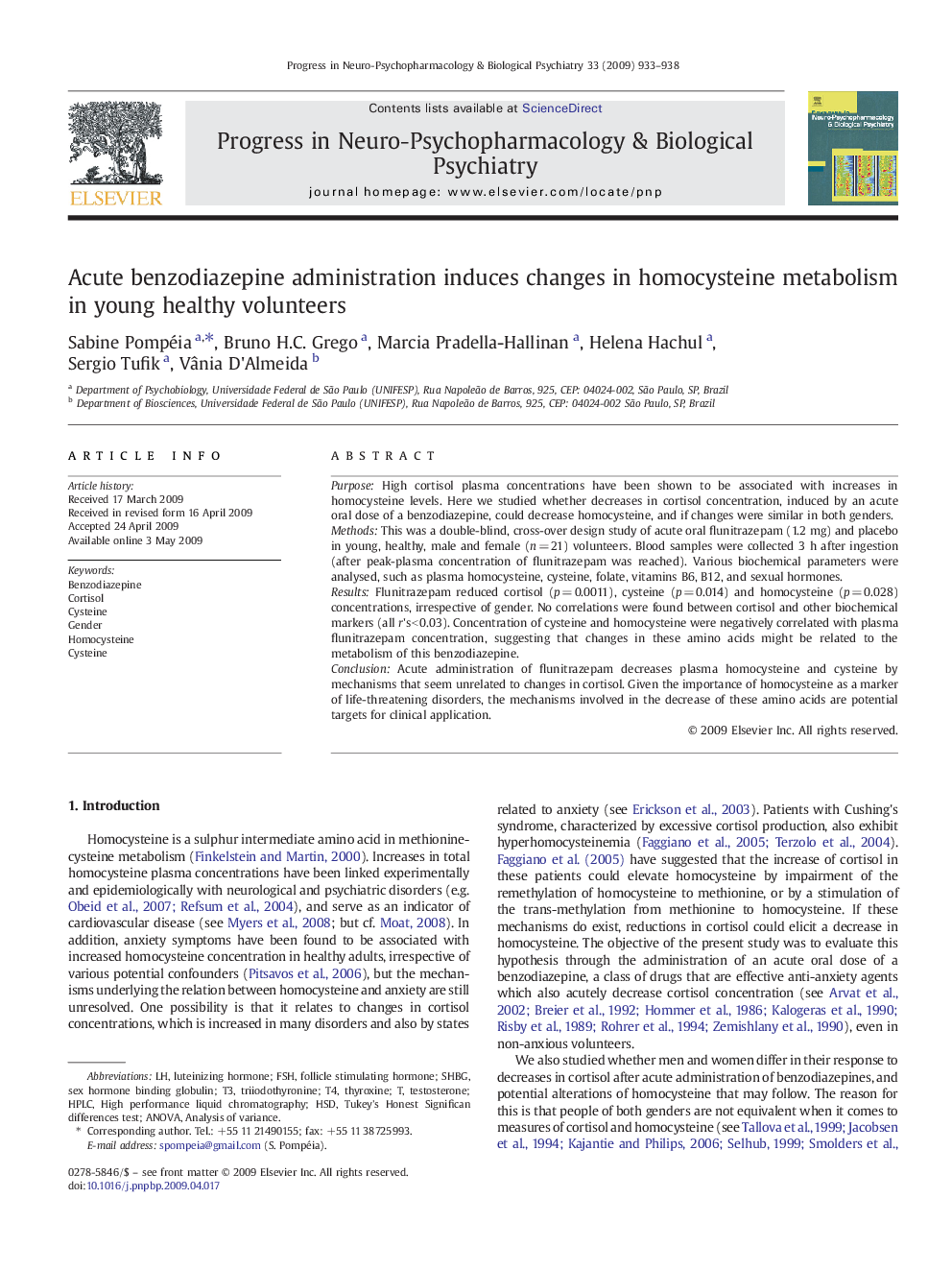| Article ID | Journal | Published Year | Pages | File Type |
|---|---|---|---|---|
| 2565801 | Progress in Neuro-Psychopharmacology and Biological Psychiatry | 2009 | 6 Pages |
PurposeHigh cortisol plasma concentrations have been shown to be associated with increases in homocysteine levels. Here we studied whether decreases in cortisol concentration, induced by an acute oral dose of a benzodiazepine, could decrease homocysteine, and if changes were similar in both genders.MethodsThis was a double-blind, cross-over design study of acute oral flunitrazepam (1.2 mg) and placebo in young, healthy, male and female (n = 21) volunteers. Blood samples were collected 3 h after ingestion (after peak-plasma concentration of flunitrazepam was reached). Various biochemical parameters were analysed, such as plasma homocysteine, cysteine, folate, vitamins B6, B12, and sexual hormones.ResultsFlunitrazepam reduced cortisol (p = 0.0011), cysteine (p = 0.014) and homocysteine (p = 0.028) concentrations, irrespective of gender. No correlations were found between cortisol and other biochemical markers (all r's < 0.03). Concentration of cysteine and homocysteine were negatively correlated with plasma flunitrazepam concentration, suggesting that changes in these amino acids might be related to the metabolism of this benzodiazepine.ConclusionAcute administration of flunitrazepam decreases plasma homocysteine and cysteine by mechanisms that seem unrelated to changes in cortisol. Given the importance of homocysteine as a marker of life-threatening disorders, the mechanisms involved in the decrease of these amino acids are potential targets for clinical application.
